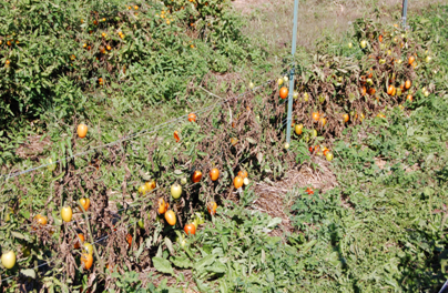
Damp foliage is heaven for fungal spores. The thicker the foliage, the less the air can circulate.

I've known people to keep an electric fan set on low to keep the air moving.īeyond that, keep as much space between tom plants as possible - at least 3' hopefully - and try to avoid great wads of foliage developing on plants by judicious removal of branches and leaves. Air circulation is a big help against the fungal spores settling on foliage.

As WD says above, ventilation is a fundamental. Unless you want to spray preventively against fungal problems, all you can do is basic housekeeping. However, the qualities that make neem oil highly effective against a handful of fungi may sometimes prove just enough to stop tomato blight when it first infects the plant.I have had tomato blight in the greenhouse for the last 2 years.Ĭan you tell me if and what treatment i should use to avoid it happening again Meanwhile, the clarified oil can kill some surface spores but cannot kill an established infection that has expanded under the plant’s surface.Īs infection spreads, the oil’s benefits become less effective, and it becomes necessary to bring in more potent chemicals. The raw oil’s ability to jumpstart the plant’s immune response allows the plant to fight off the infection but doesn’t attack the fungus itself. The active element of raw neem oil, Azadirachtin, isn’t present in clarified neem oil and is the most potent of five active chemicals.

Why Neem Oil Won’t Stop an Advanced Infection Meanwhile, thoroughly soaking every part of the plant with the foliar spray at both dusk and dawn will allow it to attack the surface fungus, although the oil will only last for up to an hour. It won’t affect surface infections, but the Azadirachtin will attack fungal infections once they break the plant’s surface. Pour 2 to 4 cups of your soil soak over the roots, which will then absorb the primary active chemical, Azadirachtin, turning it into a systemic insecticide for up to 22 days. Neem soil soaks include two tablespoons of 100% percent cold-pressed raw neem oil, while the foliar spray uses four tablespoons of clarified hydrophobic neem oil. Soil soaks or drenches can trigger an immune response to fight off an infection that breaks through the plant’s surface.īoth remedies require one tablespoon of pure castile soap per gallon of water to act as an emulsifier. When used as a preventative, neem foliar sprays can often kill fungal spores that have landed on the plant’s surface. Related: Can You Use Neem Oil On Tomato Plants? How Neem Oil Works to Prevent Infections However, the good news is you can use it to help prevent the onset of both early tomato blight and late tomato blight, and it may even kill the blight in its earliest stages of infection.
:max_bytes(150000):strip_icc()/Tomato-blight-5b229a953de423003766c821.jpg)
The sad news is that neem oil can’t stop tomato blight on its own. You might be encouraged to try it out on tomato blight, but will it work against some or all forms of leaf blight? Does Neem Oil Help Stop Tomato Blight? It even manages to grow on infected tomatoes that are improperly stored.Īnyone who’s used neem oil to combat plant problems in the past knows it can also kill some fungi and bacteria. It first resembles water spots but quickly rots the leaves and stems as it spreads. Meanwhile, late blight is a fast and deadly mold.


 0 kommentar(er)
0 kommentar(er)
